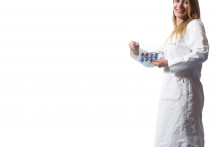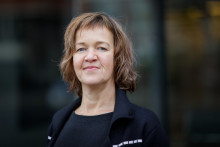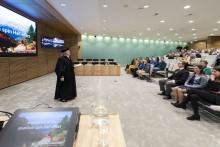‘My father gave me a microscope, when I was at elementary school. It made me excited about biology – it opened my eyes to a very big universe within very small things’, says Hadavi.
During Hadavi’s bachelor studies in her home country of Iran, she became interested in tissue engineering and she applied to universities that were best in this field. She was accepted to all of them, but because she also received the highly competitive Nuffic Huygens Scholarship, her journey led to the Netherlands.
‘Besides wanting to work at a high level university, I wanted to travel. The world is like a book – if you don’t travel, you are reading only one page of it’, adds Hadavi.
Treating diabetes
After her Master’s studies at the Radboud University in Nijmegen, Hadavi was certain she wanted to pursue a career in the field of tissue engineering. ‘I knew that was exactly what I’d been looking for since childhood’, she says.
Hadavi is now a PhD candidate at the UT and works on developing bioactive scaffold for treatment of type 1 diabetes. ‘Diabetes is a global problem that about 366 million people suffer from. Type 1 diabetes is a disease that causes immune system to destroy islets responsible for release of insulin’, explains Hadavi.
Traditional treatment of diabetes involves insulin injections, but that can lead to other complications. There is a promising minimal invasive therapy available – intra-hepatic islet transplantation, which involves injection of donor’s islets into the patient’s liver. However, most of these islets are destroyed shortly after transplantation, which is exactly what Elahe Hadavi is trying to change.
Chocolate
‘By making bioactive scaffold, we can create a protective environment for the islets and help them increase their function and viability’, Hadavi says. ‘In a nutshell, I’m creating a bioactive device that acts like natural pancreas, and therefore treats type 1 diabetes. After establishing what the proper microenvironment for islets looks like, I can start implementation in animals, first rats and then pigs.’ With time, hopefully even humans.
Hadavi is very passionate about her work: ‘I am happy I can contribute to improving lives of people with diabetes. Imagine they could simply go to the shop and eat any chocolate they wanted!’







